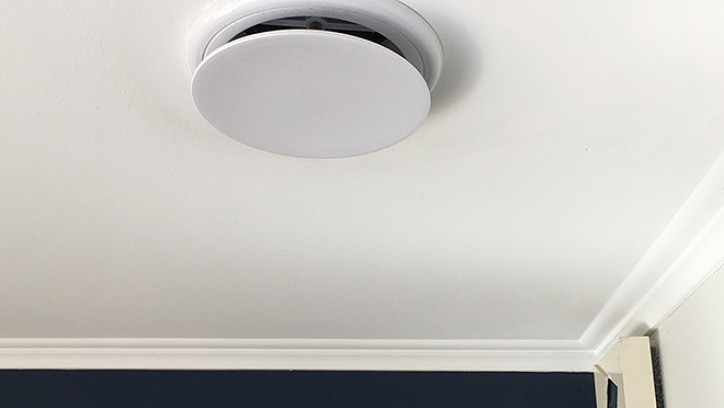Ventilation and heat recovery systems
Last updated: 9 August 2023

Circulating and retaining heat can improve insulated houses that are in cold or damp areas.
Whole house ventilation and heat recovery systems
If you are trying to make your home warmer, the first step is to sort out your insulation and draught-stopping, install an effective heating system and tackle any sources of dampness.
Causes and effects of high moisture has information about why dry air is easier to heat.
Once you have addressed these basic issues, a home ventilation system can be helpful if you still have problems with condensation and ventilation. There are three types of home ventilation systems commonly available in New Zealand:
- positive pressure or roof cavity ventilation systems
- negative pressure or continuous extract ventilation systems
- balanced pressure or heat recovery ventilation systems.
Don’t pump damp or contaminated air from your roof into your house.
Hazard note: Home ventilation systems should under no circumstances be installed in dwellings with roof claddings that contain asbestos. Where systems are already installed in such dwellings, they should be deactivated and ideally removed. Removal should only be carried out by professionals trained in asbestos hazard prevention.
Positive pressure or roof cavity ventilation systems
Positive pressure or roof cavity ventilation systems are the most common type available in New Zealand. They bring filtered air from the roof space or outside into the living spaces through a single, or multiple, ceiling vents. This forces the stale air to leak out through gaps, windows and doors.
Some ventilation systems have an optional electrical heating unit to provide some pre-heating of air coming from the roof cavity when it is cold. These are known as electric in-line duct heaters. These are electric resistance heaters, and a lot of the heat can be lost between the heater and the outlet. Therefore they are not very efficient or economical to run.
Most electric in-line duct heaters don't have sufficient capacity to meet a home's heating needs and they are a relatively expensive and inefficient way to heat a home. You will get more effective heating from other heaters, for example heat pumps.
Ventilation has more information.
Negative pressure or continuous extract ventilation systems
Negative pressure or continuous extract ventilation systems continuously extract air, oftentimes from a kitchen and/or bathroom, at a low rate. This creates a negative pressure that draws air in from outside.
In modern airtight homes this usually requires dedicated vents to be installed in living areas and bedrooms, either as trickle-vents in window frames, or as wall vents.
This type of system may not be ideal in older homes with floorboards, where the system may inadvertently draw air in from the subfloor space.
Balanced pressure or heat recovery systems
Balanced pressure or heat recovery ventilation systems are particularly suitable for homes in colder areas of the country, if they are already well heated and if they are reasonably airtight.
They are also good for homes in noisy areas or where windows can’t be readily opened for ventilation.
These systems have two fans:
- an intake fan, which supplies fresh outdoor air into the house through several ceiling vents
- an exhaust fan, which takes stale air from inside the house and discharges it to the outside.
An air-to-air heat exchanger (usually installed in the roof space) transfers heat from the inside air to the incoming fresh air from outside. In this way, most of the heat is recovered.
To be most effective, the house should be as airtight as possible so that almost all ventilation air passes through the heat exchanger, rather than being leaked out through draughts. You will need to ensure that you operate and maintain the ventilation system according to the manufacturer’s instructions for it to provide the best functionality.
Some products include additional features to utilise heat in the roof space when it is available on sunny winter days, or to avoid warming incoming fresh air in summer when it is hot.
Heat recovery systems provide good fresh air ventilation but they are not a heating system. However, they can recover some of the heat from the inside air which means that the fresh air coming in will be warmer. This means you will need less heating to warm your home.
Note: if the system does not include a heat exchanger, it is not a true heat recovery system.